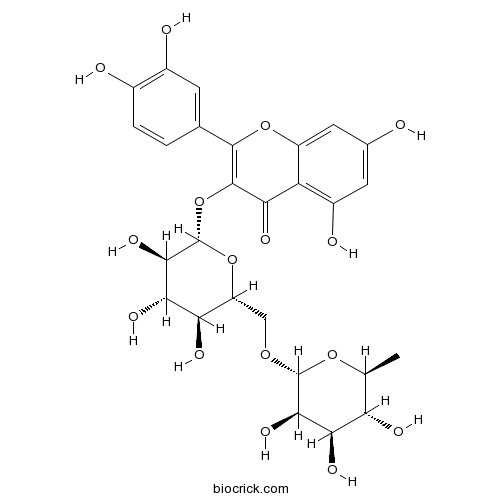Xanthium mongolicum
Xanthium mongolicum
1. The products in our compound library are selected from thousands of unique natural products; 2. It has the characteristics of diverse structure, diverse sources and wide coverage of activities; 3. Provide information on the activity of products from major journals, patents and research reports around the world, providing theoretical direction and research basis for further research and screening; 4. Free combination according to the type, source, target and disease of natural product; 5. The compound powder is placed in a covered tube and then discharged into a 10 x 10 cryostat; 6. Transport in ice pack or dry ice pack. Please store it at -20 °C as soon as possible after receiving the product, and use it as soon as possible after opening.
Natural products/compounds from Xanthium mongolicum
- Cat.No. Product Name CAS Number COA
-
BCN1684
Rutin153-18-4
Instructions

[Comparison of HPLC fingerprints of Xanthium sibiricum and Xanthium mongolicum fruits].[Pubmed: 25566651]
To compare and establish the HPLC fingerprint of Xanthium sibiricum and Xanthium mongolicum fruits for the quality control.
[Chemical constituents from Xanthium mongolicum].[Pubmed: 19873782]
To study the chemical constituents of Xanthium mongolicum.
Authentication and quantitative analysis on the chemical profile of Xanthium fruit (Cang-Er-Zi) by high-performance liquid chromatography-diode-array detection tandem mass spectrometry method.[Pubmed: 19185132]
A high-performance liquid chromatographic method using diode-array detection and electrospray ionization tandem mass spectrometry (HPLC-DAD-ESI-MS/MS) was developed for the qualitative and quantitative analysis on Xanthium fruit, a commonly used traditional Chinese medicine. In this study, 7 characteristic components, 1-O-caffeoylquinic acid, 4-O-caffeoylquinic acid, chlorogenic acid, 1,5-O-di-caffeoylquinic acid, 1,3-O-di-caffeoylquinic acid, 4,5-O-di-caffeoylquinic acid and 1,3,5-O-tri-caffeoylquinic acid were identified and quantified by a validated HPLC-DAD method, and a fingerprint comprised of 12 markers was established under the same operating conditions. Furthermore, HPLC-ESI-MS/MS method was successfully used to deduce the structure of three main constituents. On the basis of the established chromatographic profiles, 30 populations of cocklebur samples including 3 related species and 1 unknown species were divided into 3 chemotypes, indicated that place of origin significantly influences the kinds and content of components in cocklebur, and hence affects their quality. The simultaneous determination of 7 caffeoylquinic acids in the 30 samples showed a great variety in the amounts of caffeoylquinic acids present. The study indicated that some species such as Xanthium mongolicum of the genus Xanthium might be suitable for development as new alternative sources of caffeoylquinic acids to supplement the officially listed Xanthium species, and the abundant constituents such as chlorogenic acid perhaps should be recorded in some authorized publications and applied to the quality control or quality evaluation for Xanthium in China. The entire analytical procedure is reproducible and suitable for the authentication and quantification of Xanthium fruits.


